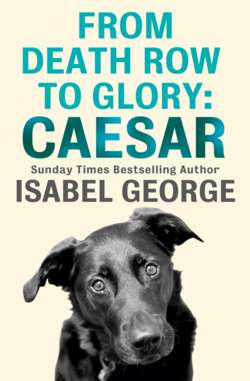Читать книгу From Death Row To Glory: Caesar - Isabel George, Isabel George - Страница 6
ОглавлениеChapter 1
It’s one of life’s little secrets, the bravery of animals in conflict.
Animals have accompanied man into battle since war was first waged. Over two thousand years ago Hannibal took war elephants, soldiers and supplies over the Alps. The giant animals negotiated narrow snow-covered mountain passes, risking life and limb to face the mighty Roman army. Centuries before that, the Ancient Egyptians recorded in their intricate paintings how they proceeded into battle with hundreds of horses pulling chariots, men holding hungry lions straining at the leash and falconers with trained hawks poised to do harm. The animals were there to play their part in the many military confrontations fought to secure supremacy.
Since those times, many stories have been told of the bears, camels, cats, dolphins, monkeys, mules, pigeons, rats and other creatures that have served with the Armed Forces during both world wars and beyond. Some were trained to perform specific tasks, like the dolphins deployed to detect underwater explosives, the pigeons released to deliver vital messages, mules laden with valuable supplies and rats sent running in tunnels to lay communication cables on the front line. Many others were present as mascots; the bears, cats and canaries were not trained to perform any role in particular but provided heartfelt companionship, warmth and humour, and helped create an incredible morale. Many animals have fulfilled this role, but perhaps none more universally and consistently than the dog.
The five stories featured in this book represent the devotion and unquestioning loyalty of the canine companion in the darkest days of war. From the life-saving actions of a Second World War Army mascot under fire to the undoubted trust shared between the Tracker dog and his handler during the war in Vietnam. Man’s best friend is a constant in an uncertain environment and a welcome friend. They are a testament to companionship and to partnership when lives depend on them.
Dogs continue to prove themselves to be fearlessly loyal in all theatres of war, from the hidden depths of jungle warfare in Vietnam and Malaya to the guard and patrol duties of a desert dog in Iraq or Afghanistan. Unlike the horses of the First World War dragged down in the mud of Flanders’ fields, the dog’s speed and agility has always made him an asset on any battlefield. Intelligent and obedient, the dog could be the perfect messenger, able to skip over the trenches or through a minefield faster than any man. Not only are they more successful at such tasks than a human but they, although it hurts to say it, are also far more dispensable. That has always been and will continue to be a fact of wartime life. If a dog detects a landmine he is unlikely to be harmed and his actions will protect all around him. A man is unlikely to be so lucky.
Whether dropped by parachute into enemy country, helicoptered in and out of war zones, or transported in armoured vehicles, dogs have shown their versatility in war. Dogs do what’s required of them and their keen sense of loyalty keeps them faithful to their duties and their military masters. Considering that the majority of the dogs recruited for service in both world wars were pet dogs donated for war service, their sacrifice was immeasurable. They were loaned to the War Office, trained for duty and distributed to the Armed Forces after 12 weeks’ training. The dogs then served their country, and if they survived they were returned to their owner. These dogs took this all in their stride and the lucky ones returned to life as a fireside pet in peacetime. But for every treasured family pet to be returned home safely, there were countless others who died alongside their comrades. And for all these canine heroes, there were young soldiers, sailors and airmen who had faced horror and death and who had seen those around them lost forever, who had taken immense comfort and support from these brave, devoted companions.
The war dog is not just a feature of conflicts past. Dogs are still used in contemporary warfare and have seen service in Bosnia, Kosovo, Iraq and Afghanistan. Guard and patrol dogs remain an essential element of life on any military base at home and overseas but the role of the Arms and Explosives Search dog is one that has recently come to the fore. Trained to detect and locate weapons, explosives and bomb-making equipment, these dogs are life-savers on a daily basis. They protect the life of their handler and save the lives of military and civilian personnel with each successful ‘find’. Dogs may still be listed as ‘equipment’ but no machine and no man can match the skill of a trained search dog. Wartime strategies and hardware may come and go but the skill of a war dog remains constant and irreplaceable.
Within the ranks, the war dog is regarded as nothing less than a fellow ‘soldier’, a colleague and a companion. Over the years Service dogs and mascot dogs have been decorated for their life-saving bravery in conflict. Many have lost their lives in saving others and their fellow soldiers have deemed it vital to recognize their incredible service and sacrifice to mankind.
For these animals to give so much when they are innocent in the ways of the world and war deserves recognition. These are just five stories of many, and all are awe inspiring and heart warming in equal measure. Maybe even the dogs would ask for them to be told, and they deserve to be remembered – for all time.
